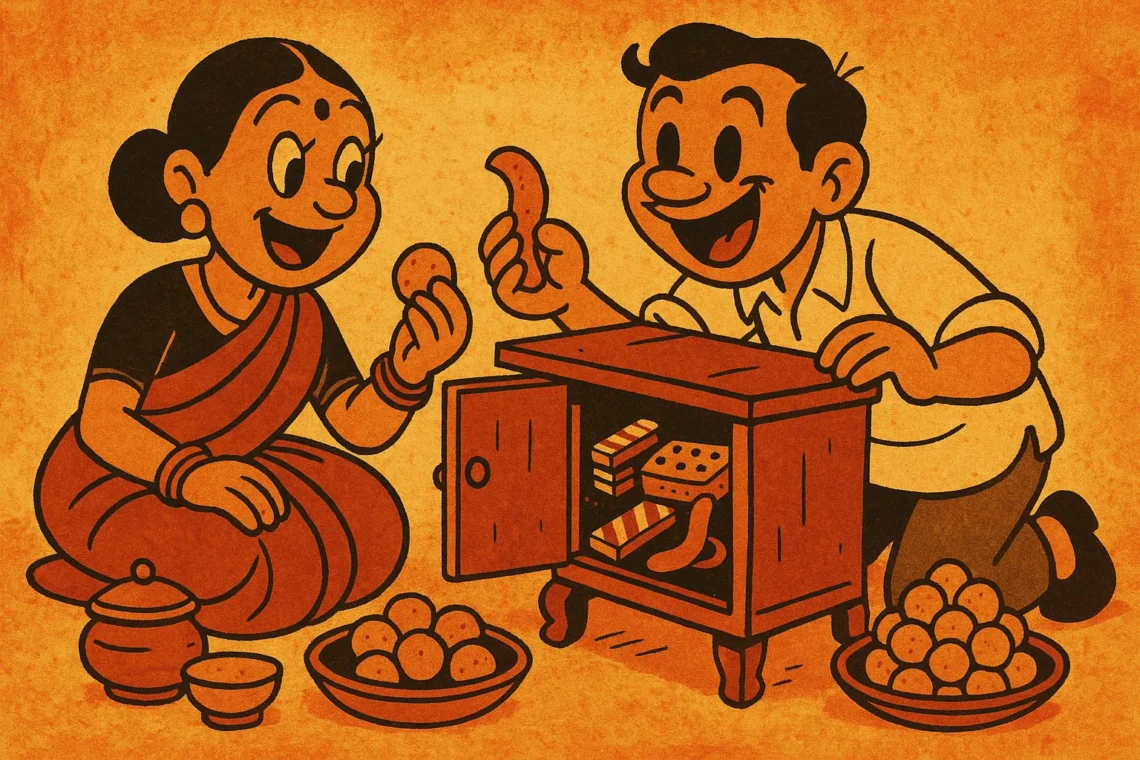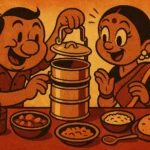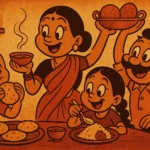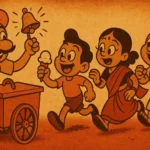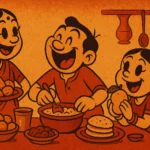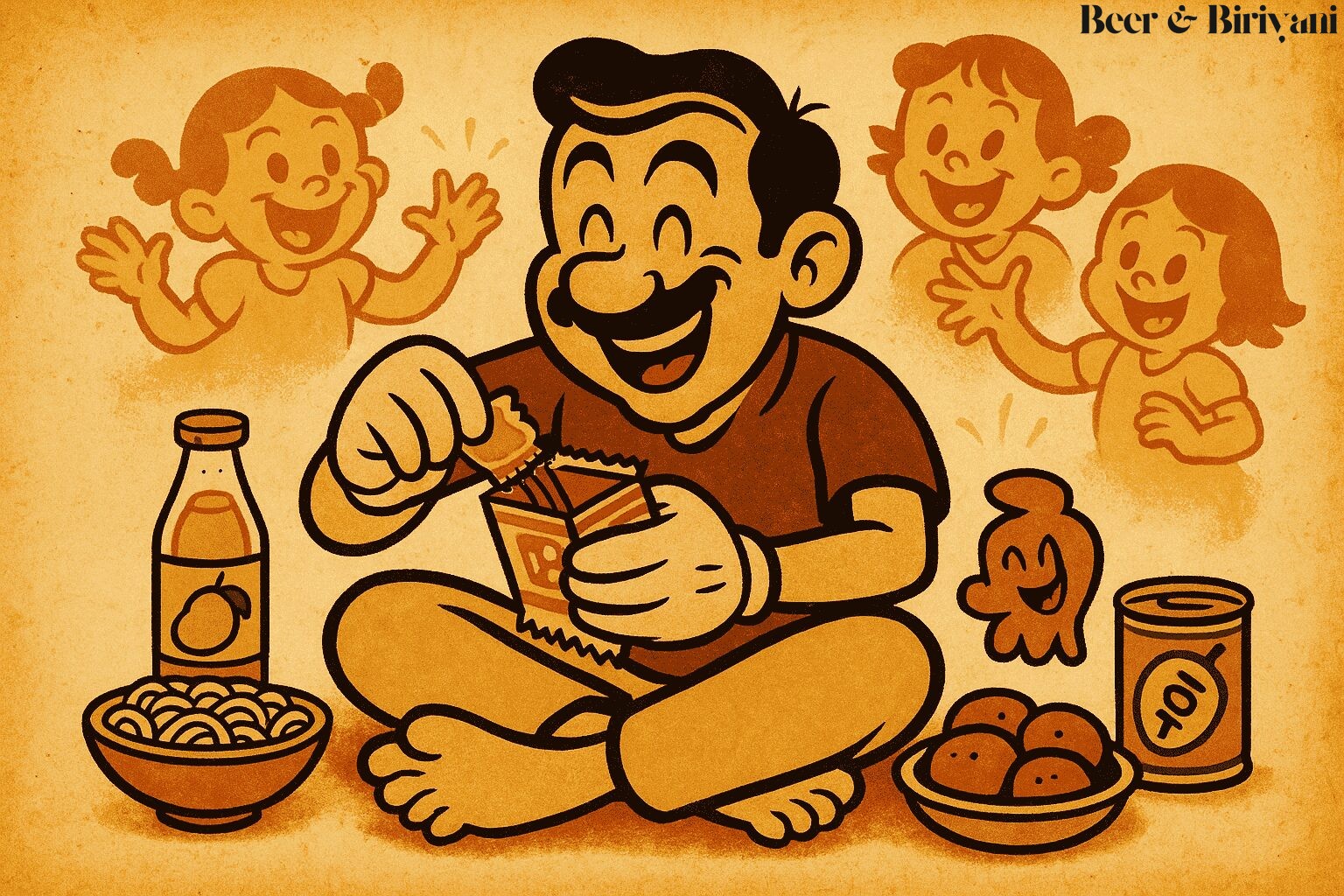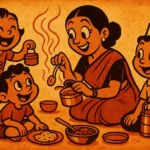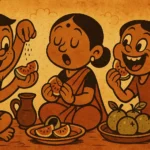Every school bag had one. Every work desk drawer still does. The compartment that isn’t listed on the label, never mentioned to parents, and always stocked with things that aren’t technically allowed. Biscuits. Chikki. A lone chocolate bar half-melted into the foil. Contraband snacks hidden in plain sight—kept not just to eat, but to hoard, barter, and sometimes, just to know they were there.
Growing up, my backpack had a secret pouch stitched into the lining. Originally meant for pencils or coins, it quickly became a smuggling chamber. Into it went wafers wrapped in old newspaper, packets of Parle-G with two biscuits already broken, and the occasional stolen sweet from the Diwali stash. These weren’t snacks. They were survival tools. They got me through boring classes, long bus rides, and last-period hunger that biology textbooks could not suppress.
Smuggled with Love (and Guilt)
Sometimes the snacks came from home—with full knowledge they were “not allowed” in school. My mother would slip a packet of jeera biscuits into my bag on exam days. “Don’t let your teacher see,” she’d say, which only made it feel cooler. There was something deeply thrilling about sneaking a bite during the five-minute break, passing it to the kid next to you under the desk like a classified document.
Other times, the snacks were communal contraband. A whole gang of us would pitch in—one got murukku, another brought spicy banana chips, someone always had a suspiciously oily thepla wrapped in foil. We’d pretend to sharpen pencils, crowd near the back benches, and break off pieces like smugglers dividing loot. No one asked who packed it or how stale it was. If it had crunch and masala, it was welcome.
The Desk Drawer that Fed a Nation
Later, in college and then work, the secret compartment evolved. It moved into backpacks, desk drawers, car glove boxes. I once had an entire stash inside an old shoe box under my hostel bed—instant noodles, energy bars, tiny ketchup sachets, a half-eaten Dairy Milk wrapped in tissue. It wasn’t about hunger. It was about control. About knowing that no matter how bad the day got, I had a mini pantry waiting for me. Spicy peanuts could fix most things.
Even now, my office drawer in Austin has a ziplock of khakra pieces, some masala trail mix, and a tin of peppermints that has never once been used for its actual purpose. On difficult afternoons, I open the drawer not to eat, but to check. Just to make sure it’s all still there. The adult version of patting your pocket to feel the toffee through the wrapper.
The Snack Is the Secret
There’s something beautifully contradictory about these hidden snacks. We hide them, but we want someone to find them. Not the wrong person—just the right one. A friend, a co-conspirator. The one you nudge during class and whisper, “Want some?” It’s never about generosity. It’s about intimacy. Sharing snacks from the secret stash is a form of trust. You don’t just hand over your last bite of gur chikki to anyone.
And sometimes, the stash is emotional insurance. After a fight. Before an exam. During a lonely lunch break. That familiar rustle of foil, the faint scent of masala, the snap of brittle—these are comforts that talk back. “You’ll be okay,” they say. “Also, you forgot how good this tastes.”
Nothing Is Truly Forbidden
Looking back, I wonder why we called them contraband. They weren’t illegal. Just unofficial. Too crunchy for classrooms, too spicy for polite company, too joyful for rules. But that’s what made them matter. They lived in the gaps—between meals, between rules, between what we were allowed and what we made space for anyway.
Now, as a parent, I sometimes catch my son smuggling dry fruit into his pencil case. I pretend not to notice. Because I know. Some things you don’t stop. You just smile quietly and make sure there’s always a little extra waiting at home. For his stash. For his secret compartment. For the joy of knowing that sometimes, the best snacks aren’t the ones you eat in the open—but the ones you hide, hoard, and share when it really counts.
Born in Mumbai, now stir-frying feelings in Texas. Writes about food, memory, and the messy magic in between — mostly to stay hungry, sometimes just to stay sane.

